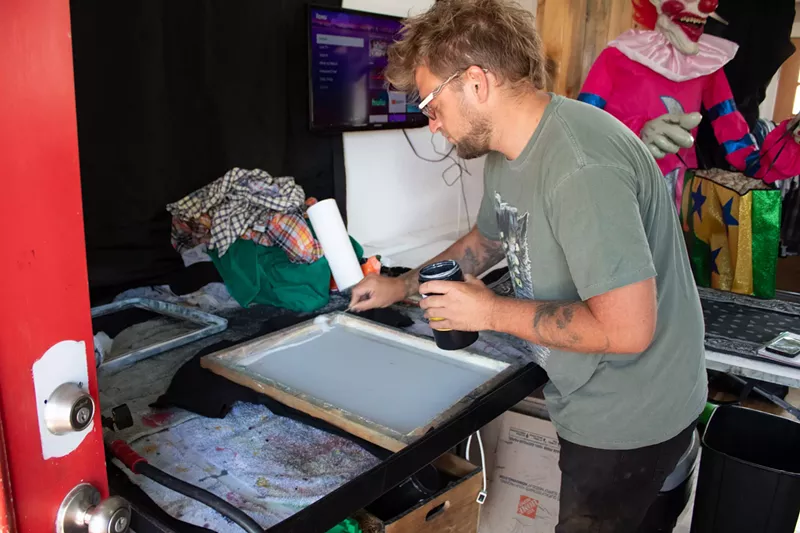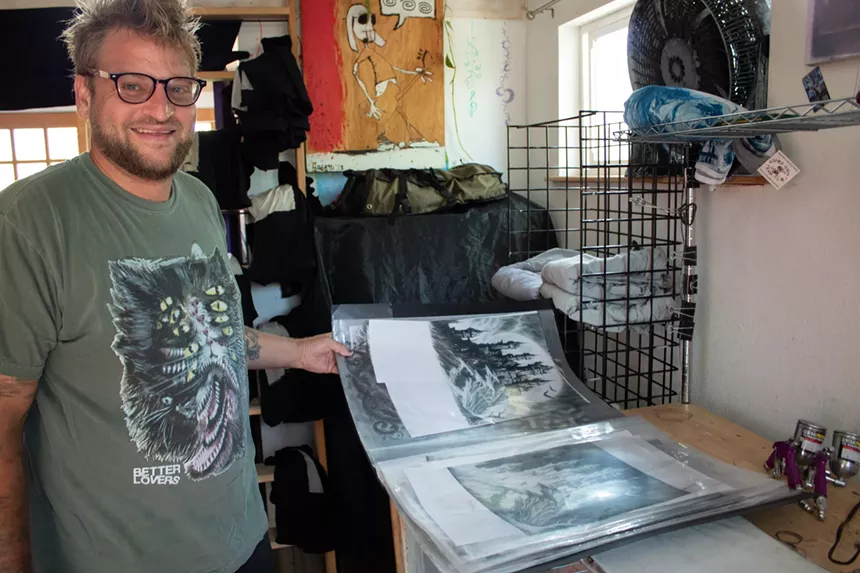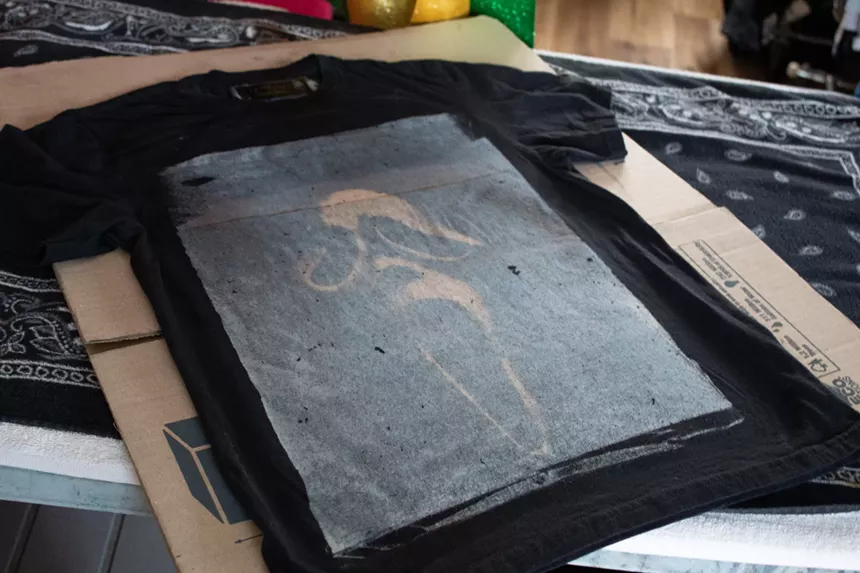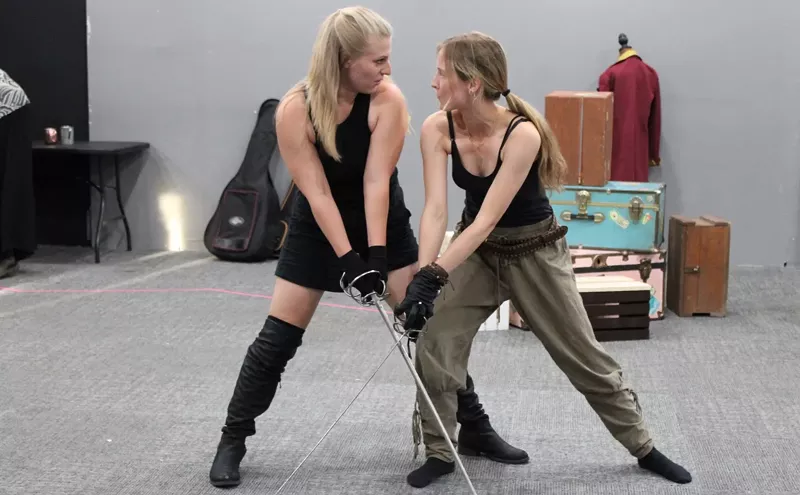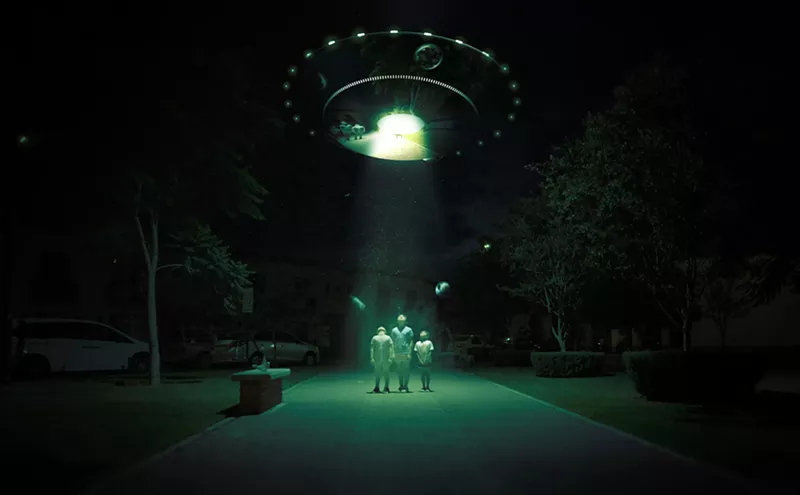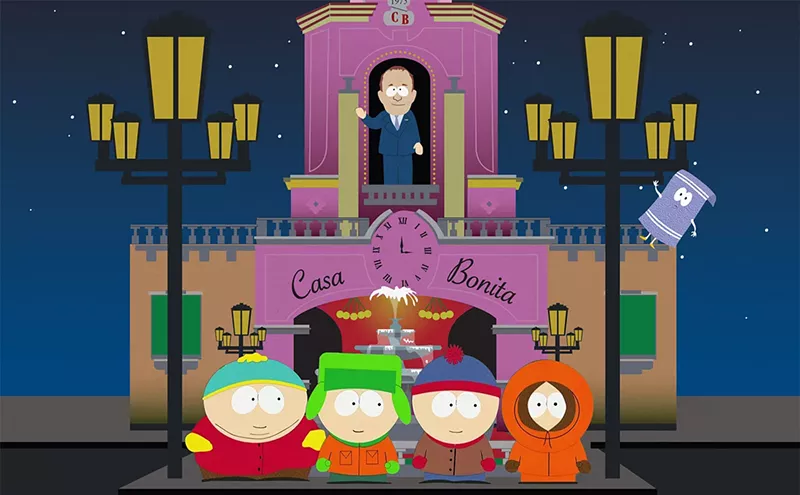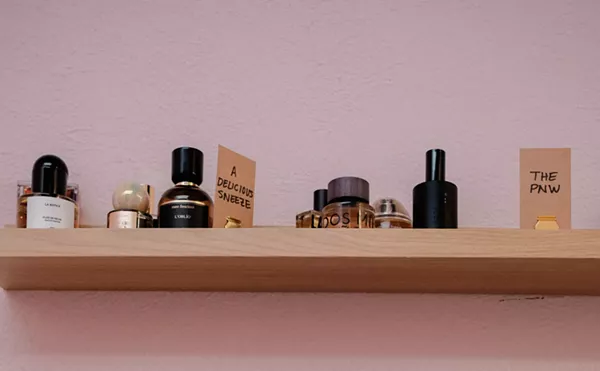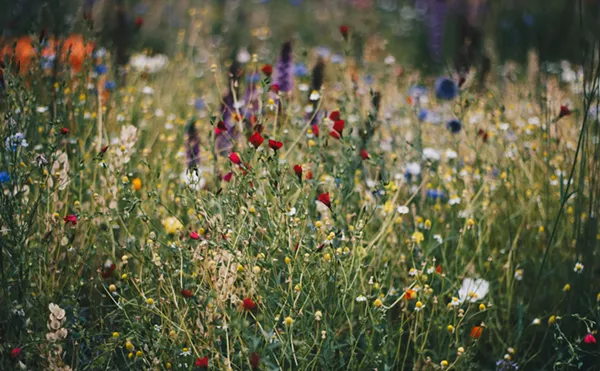For roughly a year, Usrey has been making graphic T-shirts with images printed on them using a process known as sun printing – preparing a shirt as if it were a piece of photo paper and letting the sun do the rest.
His style is unique, featuring gothic imagery – think towering cathedrals, pagan tree gods and the like – and homages to the spooky films he enjoys.“Anything that I think I’d like to wear, I’m like, ‘I should make that,’” he says. “And I’ve always loved horror movies, so it’s cool to realize that other people like that, too.”
Step one is bleaching a shirt, usually a plain black T-shirt or an upcycled flannel, with a specialized chemical that requires heat from a 400-degree press to activate, allowing the colors to develop richly in the sun. “If you’ve ever tried to bleach black, it comes out orange or peach,” Usrey explains. “It’s hard to get a direct white with it. But it smells horrible, I’m warning you.”

“Andy Warhol used to say with his prints and the imperfections in them: ‘Oh, it’s the humanity of it,’” Usrey explains.
Next comes a layer of dye (which goes on clear), and then a negative photo printed on a transparent sheet is placed over the dyed area. After that, the shirt with the transparent photo spends a little time in the sun; depending on factors like overcast and UV levels, the shirts need only roughly five minutes to “develop” before they get a brief wash.

The final step in the process is selling the product, which he mostly does at art shows around town; Usrey currently has stalls booked at shows well into October. His clothing can also be purchased via ordering on Instagram (@mystirdios_clothing) or at Sweetwater Boutique in Evergreen, owned by Usrey’s sister.
A lighting designer for AEG and Live Nation, Usrey got his inspiration for sun printing T-shirts from social media. Calling on his photography studies from high school and a great deal of research – “not many people are doing this and there aren’t a lot of tutorials or anything because it all varies,” he says – he became an expert in the art form.
Now, he creates his merch in his backyard – about 25 shirts on a productive, sunny day. A shed has been converted into a studio where he prepares the shirts for their time in the sun, stores them before upcoming art shows and, while he’s working, streams horror movies or rock music to set the vibes and spark inspiration.
Starting the business put some pressure on Usrey, but now he’s found the right balance of “what people actually want as opposed to what I want," he says.
“I was getting way too overly excited about making sure I have enough inventory and over-prepping stuff and really feeling like I needed to be working sixty hours a week doing this,” Usrey says of his initial mindset. “This year, it’s a lot more like, ‘Let’s see how this print goes,’ and I’ll make a small through double XL and see how they actually sell. The possibilities of what I can do are completely endless.”
In fact, he’s already thinking about his next step. “I’m working on a whole new line right now that’s all going to be oddity stuff," he notes. "Like Victorian scientific journal sketches of a human skull with all the different angles of it, and a bat and a rat and a snake.”
Other ambitions include teaching courses about the unique printing style – something he’s regularly approached about at art shows – though without a washing machine present, the process can’t be taught in full.

“Kind of the whole reason why I thought of being able to do this as a side hustle, my mom’s been doing art shows with her own hand-dyed silk, satin, velvet, upcycled cashmere and stuff like that ever since I was twelve years old,” he says. “I grew up going to her art shows and helping her unload and helping her sell stuff and all that shit. That’s where I kind of had a lot of previous experiences. So just being able to go to art shows and set the whole thing up and knowing how to have a booth and what I need to have in it and the weights and just all that, it’s just what I grew up doing.”
Despite his strong artistic style and success in a unique medium, Usrey stays humble about his skills.“I don’t know how much I even feel like an artist,” he confesses. “I made this so I could be able to hang out with my dogs more often.”
Catch Mystiridios Clothing July 12-13 at the Boulder County Fairgrounds for the Haunted Market. The clothing can also be purchased via Instagram (@mystirdios_clothing) or at Sweetwater Boutique in Evergreen.
